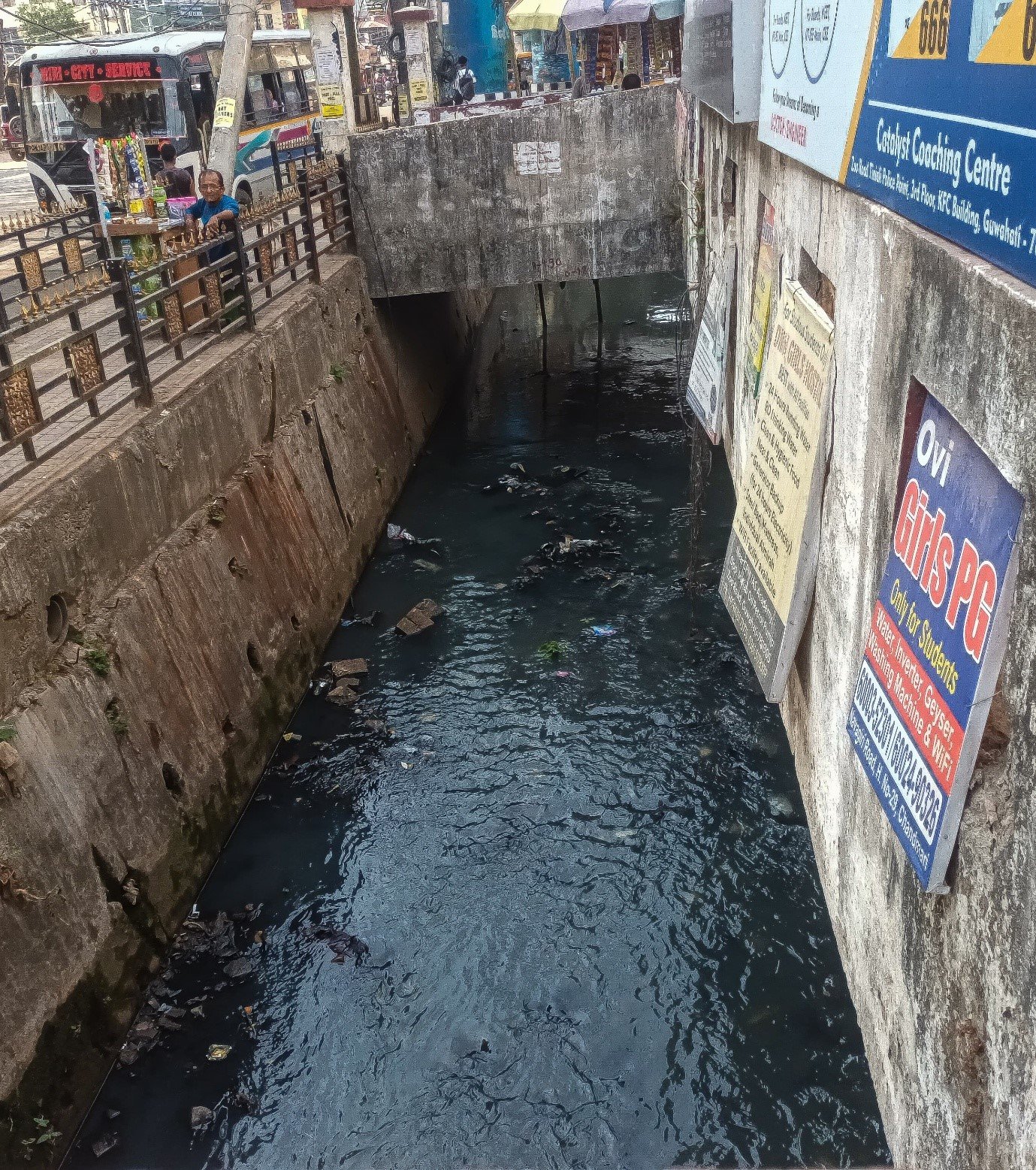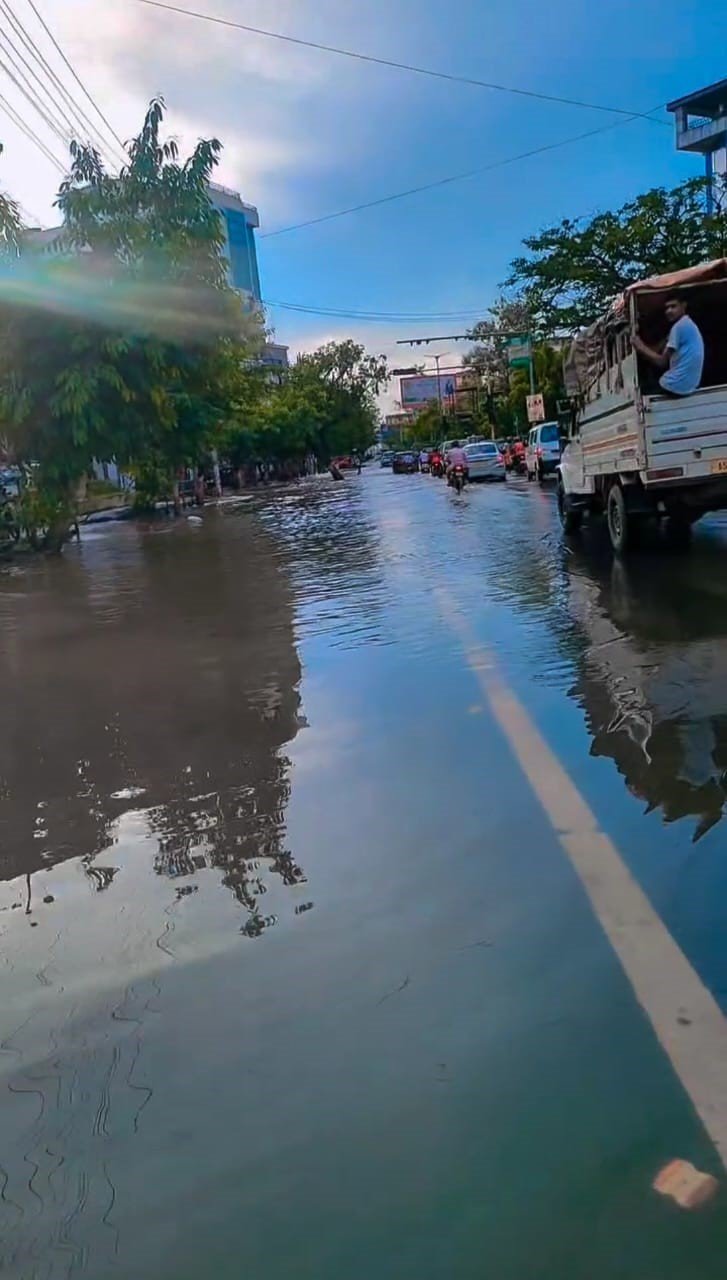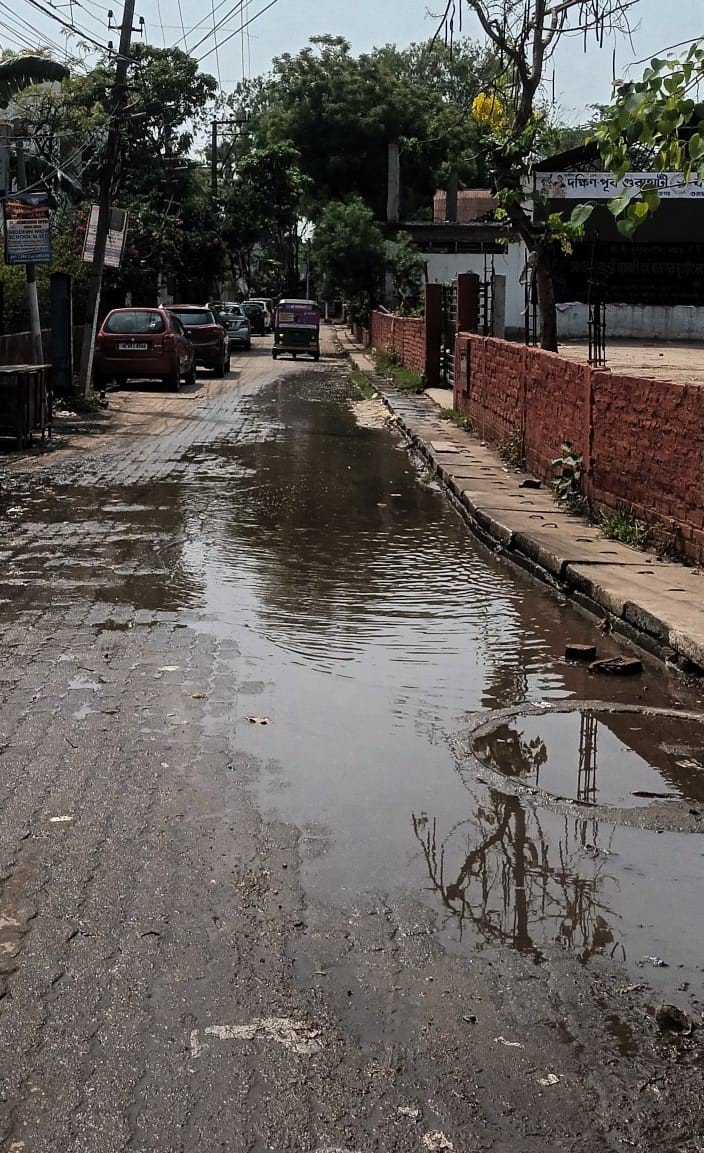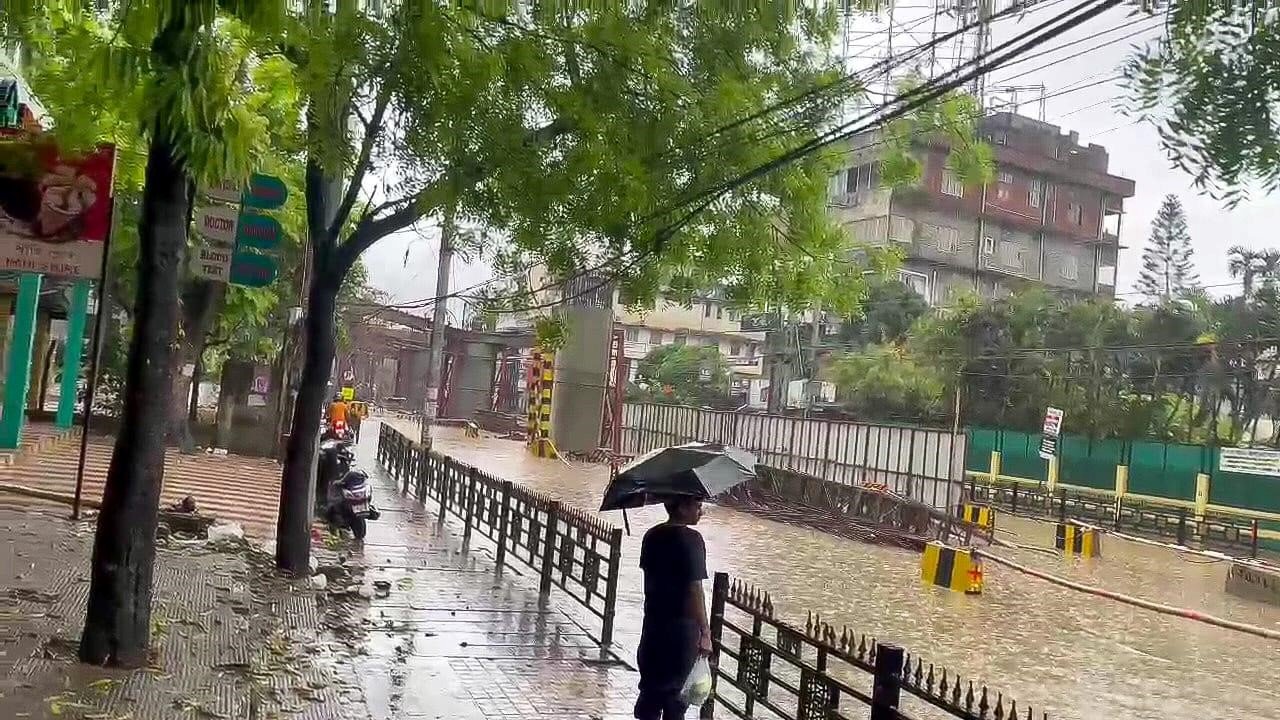During the monsoon season, waterlogging in Guwahati is acute that it turns the bustling streets into rivers, making life impossible. Just a few hours of rain is enough to flood the roads, block movements, damage houses, and close shops. While heavy rains are characteristic of this season, heightened waterlogging problems have resulted mainly due to insufficient drainage, unplanned constructions, and the reclamation of wetlands that used to absorb excess rainwater.
The drainage system has not kept pace since 2017 with the rapid growth of the city. The areas of Zoo Road, Chandmari, Hatigaon, Anil Nagar, and Nabin Nagar have experienced increased flooding year after year. A Chandmari resident says, “Earlier, the water would drain quickly after the rain, but now even a light shower keeps the roads flooded for a long time.”
One major reason has been noticed to be the drainage system of the city. The majority of the drains are clogged with plastic waste, solid waste, and silt, thereby preventing the easy flow of rainwater. Consequently, the water accumulates on the streets and almost always floods them. Illegal constructions have also obstructed natural waterways where rainwater used to flow freely. Wetlands that used to absorb huge amounts of rainwater are also filled or constructed upon. Without these natural sponges, even moderate rainfall results in serious waterlogging.

The impact on daily life is pretty harsh. With flooded roads, vehicles cannot move near Zoo Road Tiniali, Lachit Nagar, and Silpukhuri, resulting in long traffic jams. Office-goers, students, and even emergency services are delayed significantly. This period also sees a sharp rise in health problems. Stagnant water gathers and becomes a breeding ground for mosquitoes which increases the risk of diseases like dengue and malaria. Besides that, contaminated floodwater often leads to skin infections and stomach-related illnesses.
Businesses are affected very badly. Shops in Paltan Bazar and Ulubari usually face severe losses whenever their premises get flooded. One shopkeeper from Paltan Bazar said, “My shop gets damaged by floodwater every year. I spend a lot on repairs, but losses keep increasing.”
Download Nagaland Tribune app on Google Play


Experts opine that the current situation requires a significant evolution in Guwahati. The drainage system is an important factor; it should be regularly cleaned, repaired, and widening of drains, as well as new stormwater drains in the easily flooding areas. It should also be protected and restored with the remaining wetlands of the city because they could take in huge amounts of rainwater instead. Illegal construction blocking natural pathways for water flows has to be dealt with strictly.
Urban planning has to be smart, too. Infrastructures like roads should be constructed using materials that allow the water to seep underneath instead of pooling on the surface. New constructions should also have proper drain connections. On the other hand, residents also have their responsibilities. Individuals should not throw waste into the drains and participate in local clean-up campaigns to maintain the cleanliness of their neighborhoods.
Waterlogging in Guwahati does not occur only after a downpour — it indicates that the growth of the city needs to be planned better.

Experts believe that to solve this problem, Guwahati needs major changes. First, the drainage system must be improved through regular cleaning, repairing, and widening of drains. New stormwater drains should be built in areas that flood easily. Protecting and restoring the city’s remaining wetlands is equally important, as they can absorb large amounts of rainwater naturally. Strict action must be taken against illegal construction that blocks natural water paths.
Jackstraw Mushahary
St Anthony’s college Shillong
6th Semester, Communication for development

